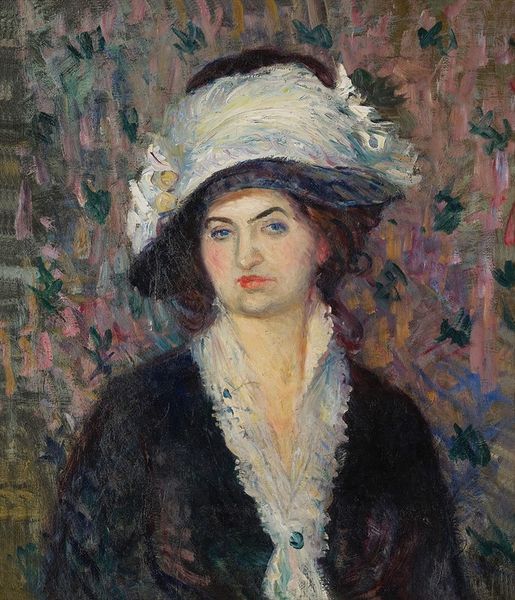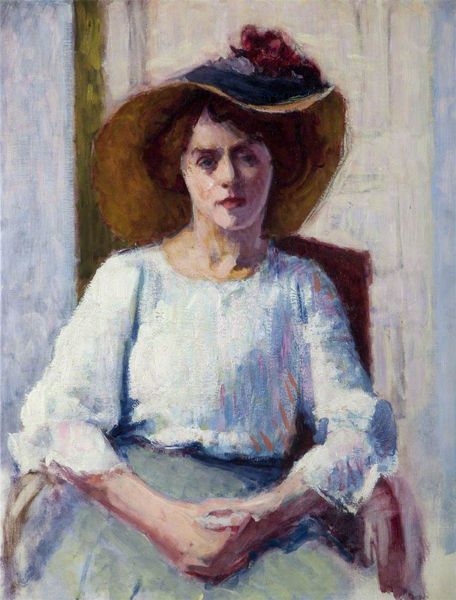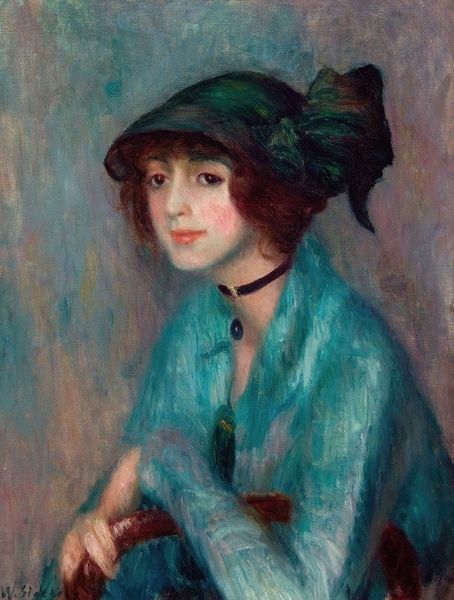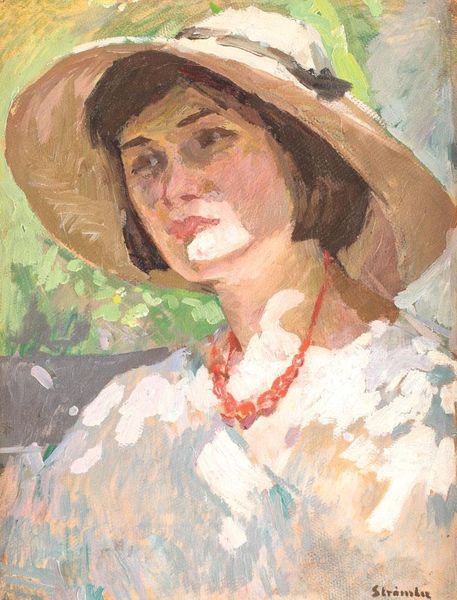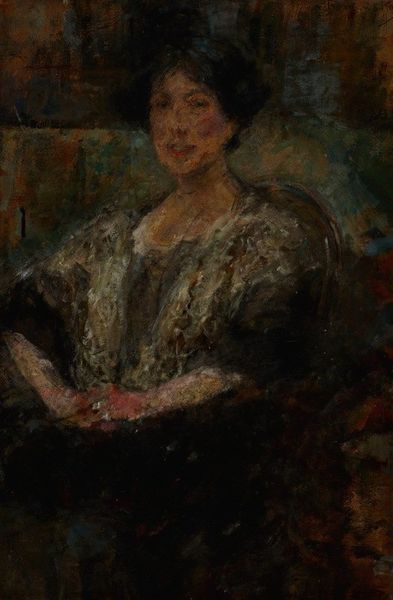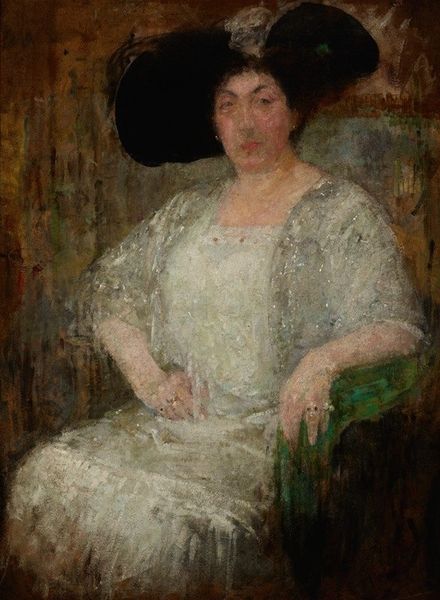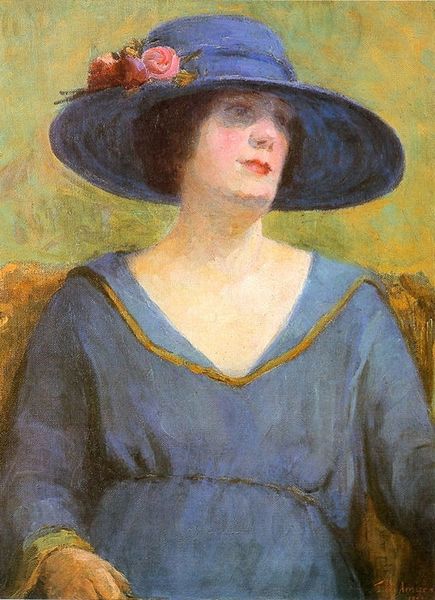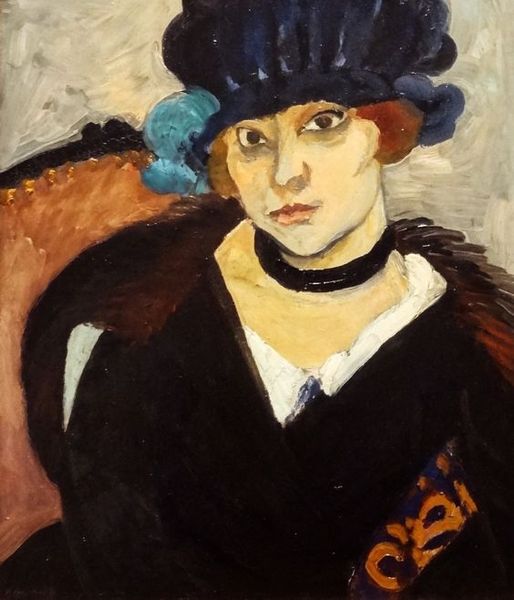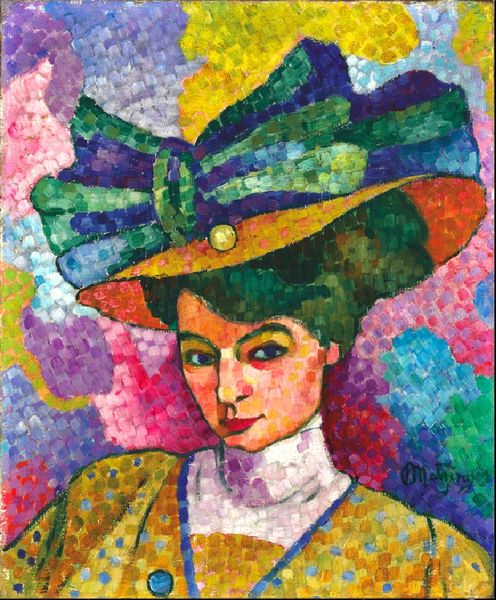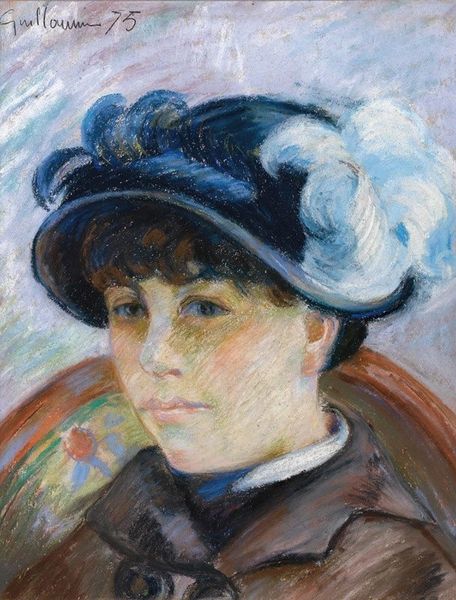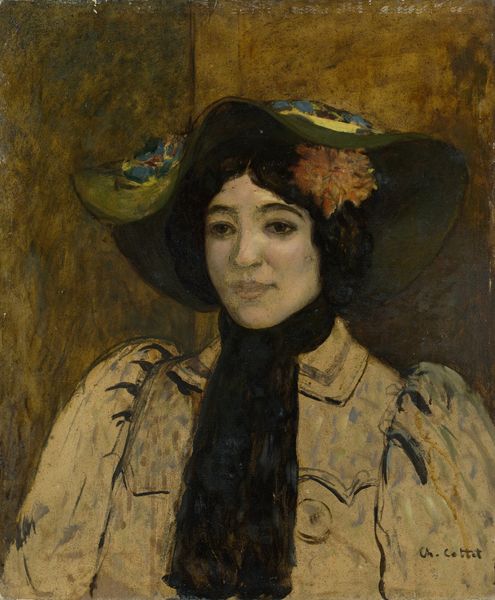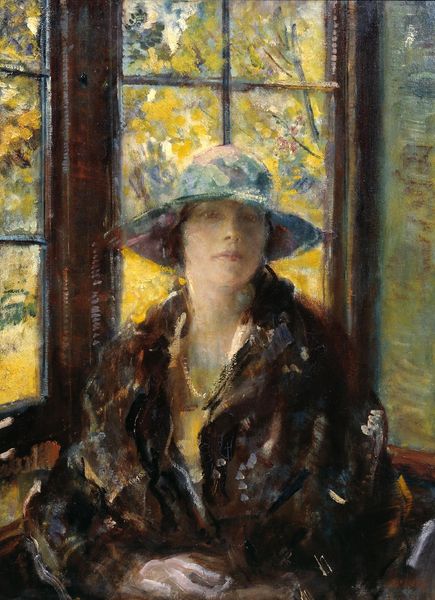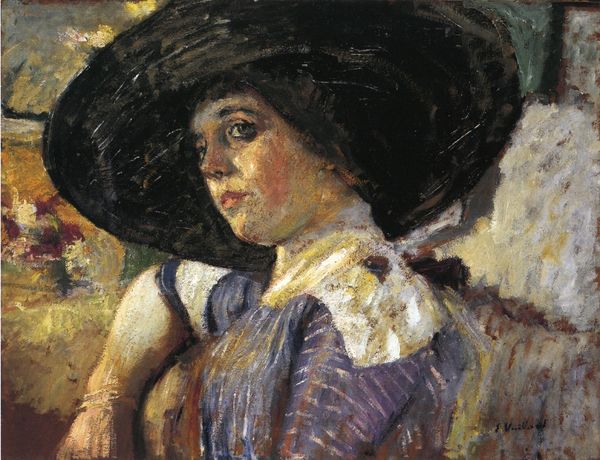
Copyright: Public Domain: Artvee
Editor: Here we have William Glackens' "Woman with Green Hat," painted around 1909, using oil on canvas. I find the brushstrokes so alive; it almost feels like the painting is breathing. How do you approach a piece like this? Curator: I begin with an assessment of its formal elements. Note how Glackens uses visible brushstrokes, building up layers of color rather than meticulously blending. What effect do you think that achieves? Editor: It definitely creates a sense of immediacy and energy, preventing the figure from feeling too static. Curator: Precisely. Also, consider the composition. The figure is centrally positioned, but slightly off-center, and how her large hat becomes a focal point, almost drawing the eye upward from the chair. Editor: Yes, the hat feels like it balances her seated posture. What about the color choices? Curator: The green hat against the warm background establishes a strong contrast, enhanced by the subtle complementary relationship between the greens and reds. But note, too, the subdued palette elsewhere—a more muted register helps emphasize the hat. How do you think this tension affects our interpretation? Editor: It does stop you from seeing it as a completely celebratory picture – it gives an interesting intensity. Thank you, the balance and the importance of the formal aspects you pointed out makes the viewing much more thoughtful. Curator: Indeed. By analyzing these components – the brushwork, the composition, the color – we unlock a deeper understanding. Close visual analysis provides valuable insight, independent of any other interpretation of it.
Comments
No comments
Be the first to comment and join the conversation on the ultimate creative platform.
